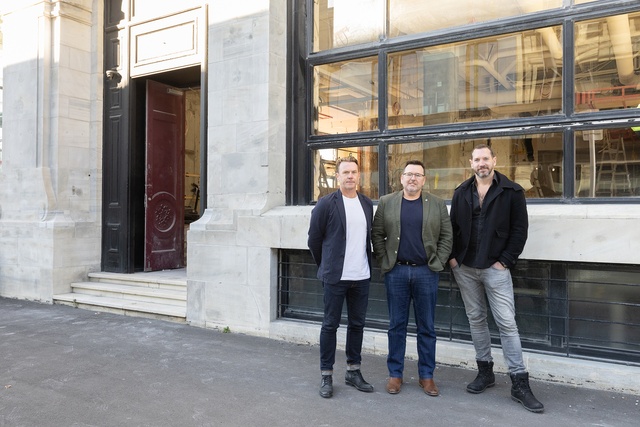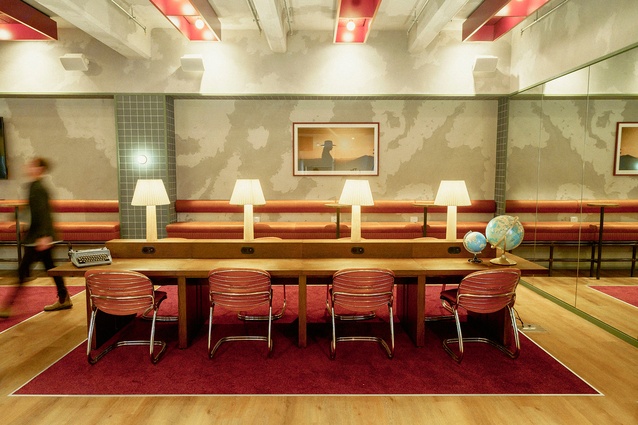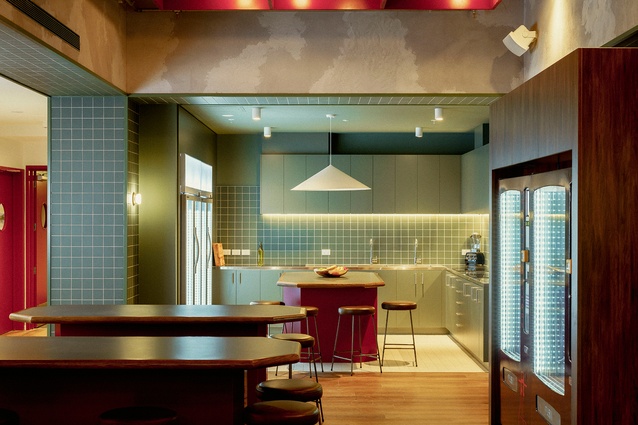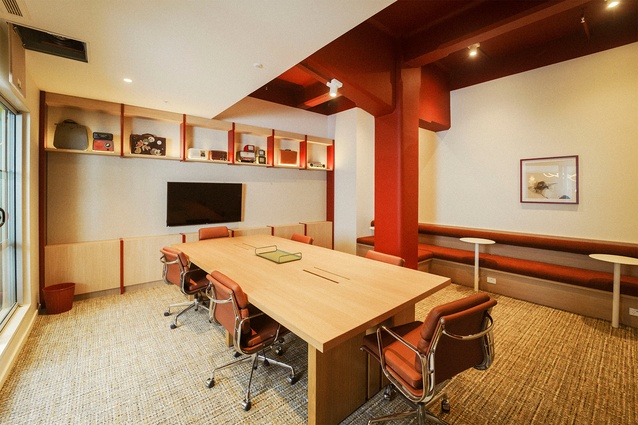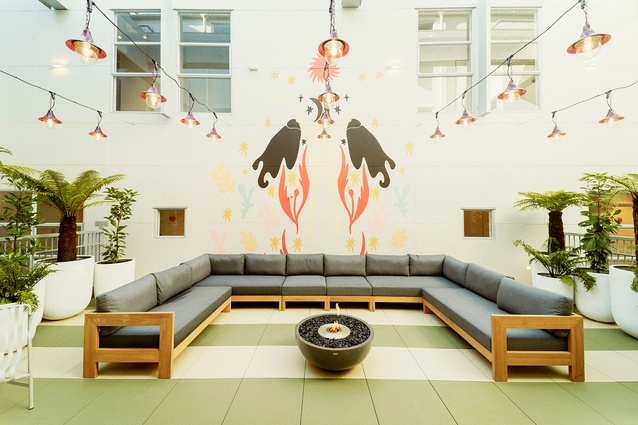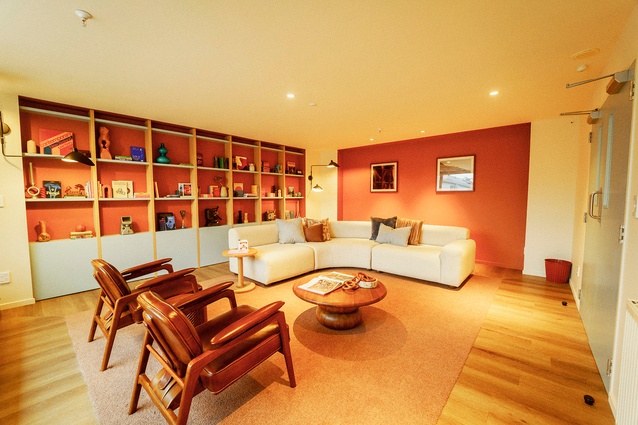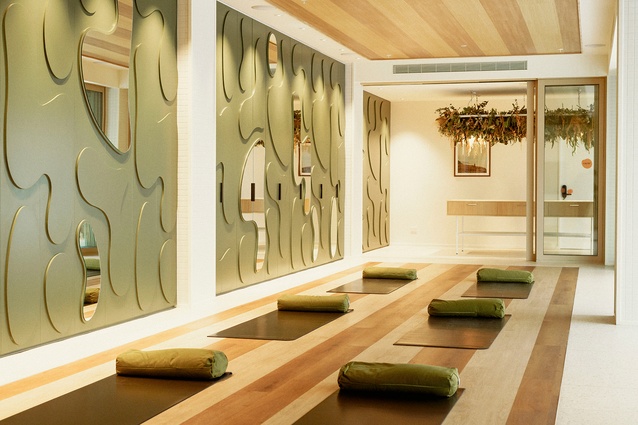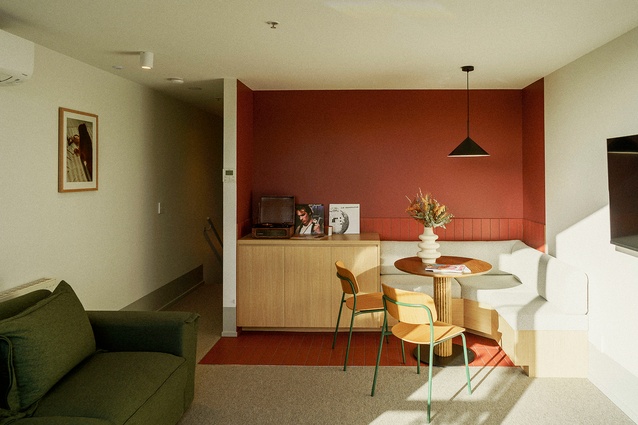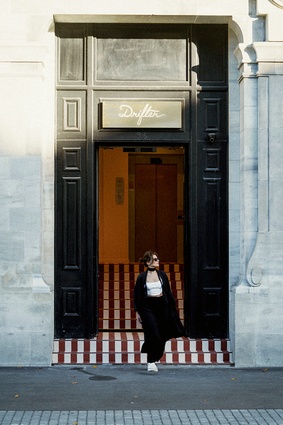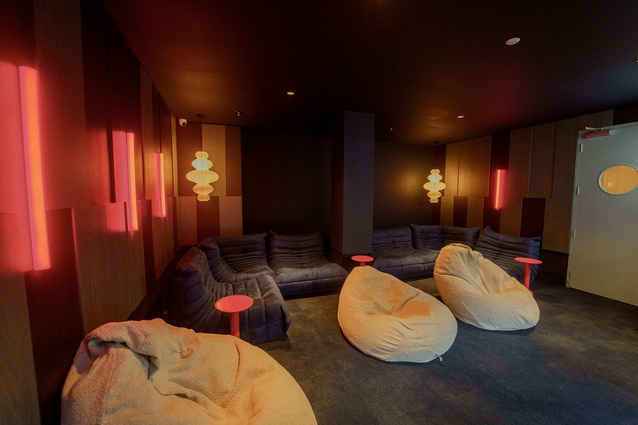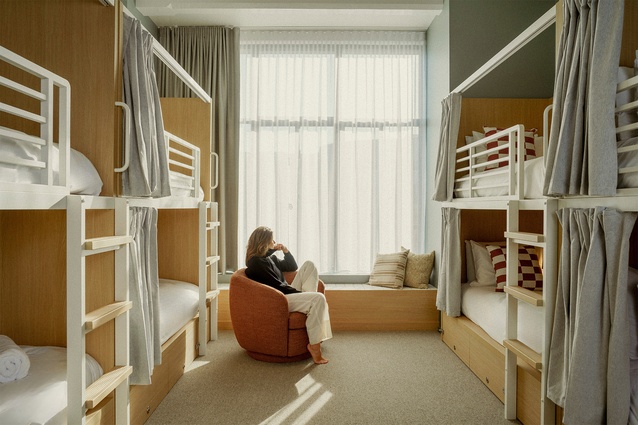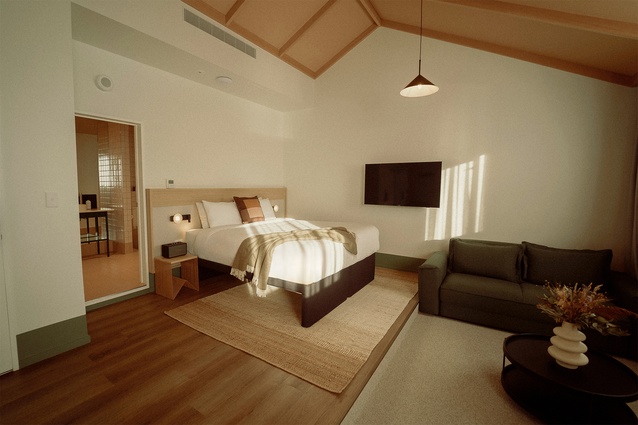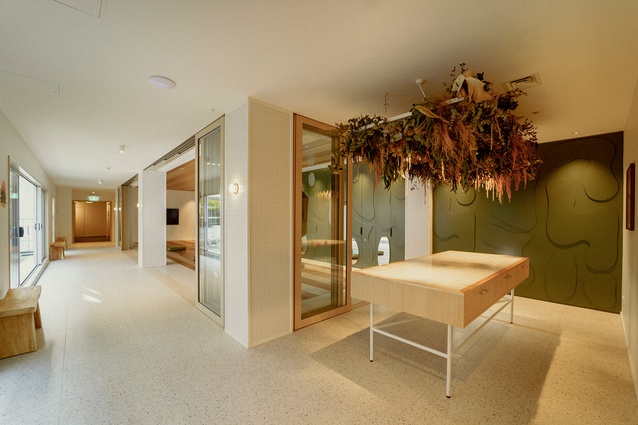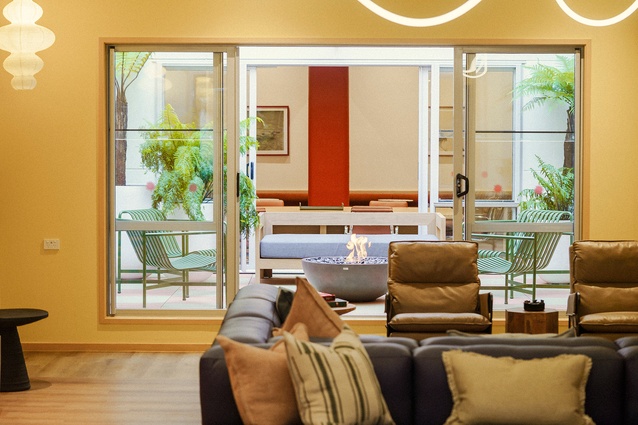Drifter Hotel: A new design attitude anchors in Christchurch
The interior of the new Drifter hotel is bold and Christchurch city centre was ready for this drench of colour. Up until now, muted tones have been a constant, as commercial construction post-quake focused on resilience, strength and robustness. Now, in 2024, Drifter Christchurch offers an injection of excitement that will aid in bringing life back to the CBD.
In June, Drifter, the flagship of the new Australian lifestyle accommodation enterprise LA Co. (Leisure Accommodation Collective), will see its 95-room hybrid hotel open, marking the first of a five-location venture in New Zealand. Accommodating up to 300 travellers at a relatively low room-rate cost, the Drifter brand targets a modern clientele looking for fun and vibrant social experiences, with opportunities for interactions with the general public in its soon-to-be-opened bar and restaurant.
Built within the former Wellington Woollen Manufacturing Company Building, designed by William Henry Gummer in 1919, the hotel is in the hospitality and nightlife centre of Christchurch. The retrofit by interiors-led design studio CTRL Space is a celebration of heritage and modernity, where design interventions ease into the historic building’s fabric and celebrate its original features. The existing building, clad in tākaka marble — one of only three in the country — underwent a significant structural upgrade and carbon wrapping.
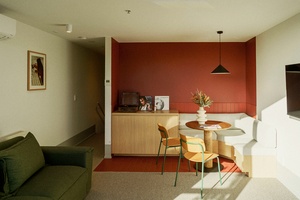
Unique and experimental in its offering, LA Co’s Drifter series celebrates social interaction. The hotel offers a mixture of diverse multifunction and multi-use accommodation offerings, entwined with communal areas such as wellness studios, cinema rooms, social lounges, a library and outdoor courtyards. At street level, public and private amalgamate with a restaurant and bar experience opening in August.
The design, overseen by CTRL Space’s founder and director Chris Stevens and led by creative director, Sam Griffin, looked to the Bauhaus movement and Modernism as an anchor, referencing the “once-considered progressive” existing building. Stevens says the Bauhaus movement of the 1940s influenced a number of elements, including the colour palette. Although touches of Modernism were used, Stevens says the design approach was fundamentally Minimalist, to provide a more universal foundation that appeals to a broader demographic of guests.
“Much of the modernist influence is delivered through furniture, art and finishes, giving each of the spaces across the five floors a different tone and mood,” says Stevens. “Where spaces require more energy and visual engagement, we’ve introduced stronger colours, materials, art and decorative elements. Creating different moments as guests move through the building was central to our design and we feel we’ve achieved that with this approach.”
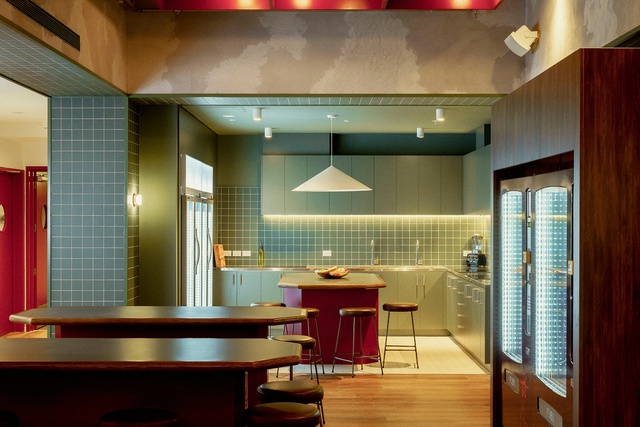
The use of colour was a critical design application throughout the project. Stevens explains: “By creating a building colour hierarchy, or energy matrix whereby the colour application related to the energy and activity on each level, has resulted in bolder, brighter tones in the lower, more-public-facing spaces and muted tones in the private areas, providing instant spacial recognition of public/private zones.”
Colour also played a part in updating the overall look of the building, to accent and modernise the heritage features and detailing, such as the exaggerated skirting and cornice bands with pops of colour in the amenities.
Existing windows and a northern façade orientation allow for passive thermal strategies and light-filled rooms, which display local artworks, many without frames, most notably the Beni Single mural.
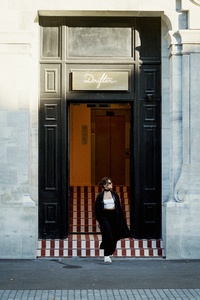
The furniture and woollen pieces pay homage to the heritage and history of the building. Creating visual interest, tiles and varying textural elements throughout allow for a tactile experience. In the entry stairs, white and scoria-red tiles pull you in from the street front, offering a small clue of what’s to come.
The central site bodes well for the incoming traveller. Located on Lichfield Street and in a very easily recognisable area that once was a bustling Sol Square, all amenities are within walking distance: Te Kaha, the Central City Bus Exchange, Te Puna o Waiwhetū The Christchurch Art Gallery and other central city offerings. The hotel is a welcome signal of urban city infill and density.
On being part of a key interior urban renewal project of significant heritage importance, Stevens says the project allowed the team to dig deep on the heritage of the original building and its location, and pay homage to some of the great art and design movements of the 20th century. “The historical significance of the building and its location is something we really leaned into with our design approach.”
Although this building has been converted into a hotel, it feels like a blurring of a typically well-defined typology. The multi-use factor of the brand propels this establishment into a category that is resilient for the future. Drifter ticks a lot of boxes, not only for its design but also for its accommodation of a diverse range of travellers.
I’m looking forward to seeing CTRL Space’s design responses to the brief for this brand in our other major cities. Among the other new builds filling the Christchurch skyline, Drifter is a reminder that Christchurch is getting there.
